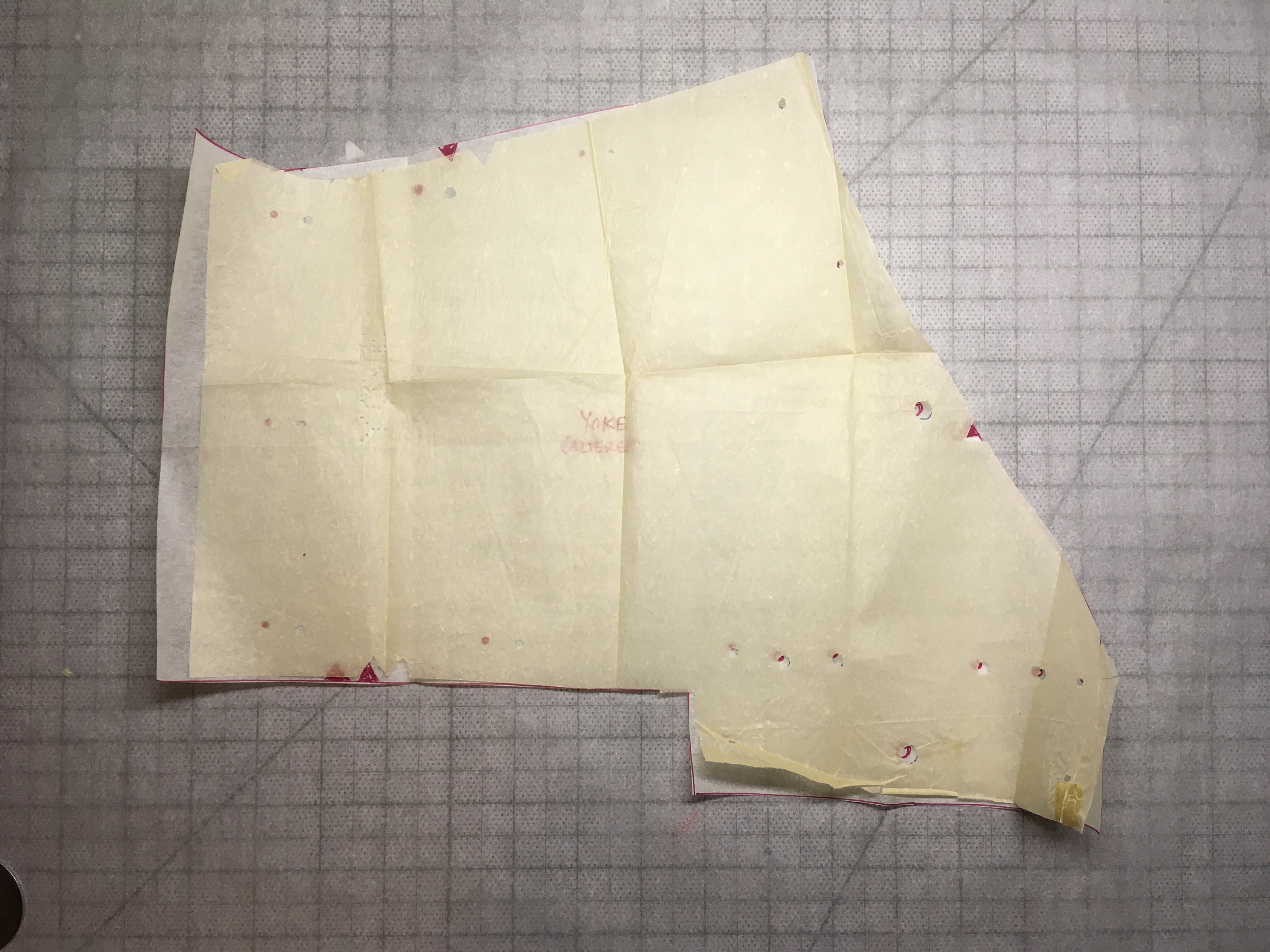Vintage Pattern: Butterick 5238, Preparing the Pattern
Today I am starting on a yoke front blouse from the 1950s, Butterick 5238. This particular pattern is in pretty good shape and is a perforated pattern rather than a printed one. For vintage pattern newbies, vintage patterns were produced several ways; the draft-at-home, the pre-cut perforated, and the printed. Multi sized patterns were introduced in the 1970s. Some of the most important things to note about working with vintage patterns are that the sizing is very different, so when working with them use your body measurements rather than relying on knowing your size. In addition it is good to note that vintage patterns generally have less ease built in, so if you prefer a less tailored look you will need to take that into account.
For a vintage, or any pattern really, I will first lay out the pieces and recreate them on tracing paper, faithfully marking all of the perforations and notches. Tracing the pattern helps to preserve the original, keeping it un-altered and pristine. The patterns of the perforated dots all mean something and the instruction sheet should have a key. Two large circles usually indicate the grain line, patterns of three dots grouped in a triangle usually denote an edge that should be placed on the fold.
Yoke piece, ready for tracing
The next step is some basic math and pattern manipulation. I can make some basic changes before I even cut out my first toile, because I know I don’t have a 26 inch waist, and that my bust measurement is closer to a 34 than a 32. Adding a few inches to the waist and couple to the bust, requires some cutting and redrawing, but shortly I have a new set of pattern pieces to work from. With these basic alterations I will at least be sure that I can get the toile on, so I can do more refined alterations.
Working with vintage patterns can be daunting, but it is worth the extra effort to see these styles come to life. First, there are the extra steps for preservation. I like to take photos of the instructions and the envelope, so I can avoid handling the delicate paper, in addition to tracing the individual pattern pieces. Secondly, I have noticed that vintage patterns tend to have more hand sewing involved. I don’t know about you guys, but I avoided hand sewing as much as possible when I started sewing. I just seemed like all of those little things were keeping me from reaching the finish line. Over the past couple of years as I have become someone who is serious about sewing, I have also become someone who loves all the beautiful interior finishes and hand sewn hems. All of those fiddly pieces may take longer, but the give me clothing that I will keep wearing, instead of ones sitting at the back of my closet.











